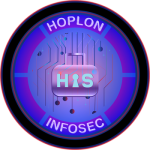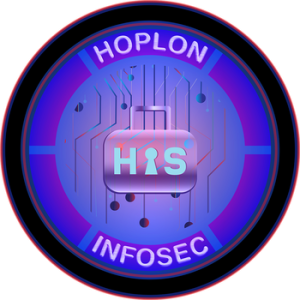Software as a Service (SaaS) has emerged as a critical component of contemporary corporate operations in today’s fast-changing digital environment. SaaS refers to cloud-based applications that enable users to access Software over the internet, removing the need for local installs and expensive IT infrastructure. SaaS’s rapid popularity is motivated by its ease, scalability, and cost-effectiveness, but it also introduces new security risks that enterprises need to prepare for. According to a recent AppOmni research, 34% of security practitioners must be aware of the number of SaaS apps utilized in their organizations, revealing a significant cybersecurity gap.
The decentralized structure of SaaS setups greatly increases security issues. Unlike traditional on-premise systems, where security measures are well-defined and controlled internally, SaaS apps frequently operate beyond the direct supervision of an organization’s IT and cybersecurity staff. This can result in uneven security standards, poor monitoring, and a lack of control over data management, making SaaS settings more susceptible to breaches.
One of the most significant issues with SaaS is the need for centralized control. Only 15% of organizations centralize SaaS security inside their cybersecurity departments, putting many businesses at risk owing to fragmented management. This decentralized model can confuse security duties and responsibilities, leaving gaps where risks go undiscovered and ignored. The lack of clear ownership over SaaS security often translates into weak accountability, which malicious actors can exploit.
Another critical issue is the culture of many corporations. Companies that stress speed and flexibility when implementing new SaaS solutions sometimes neglect creating a proactive security culture. When security teams focus primarily on technological solutions without considering cultural and operational factors, they risk paying attention to critical risks. Overconfidence in SaaS providers’ security procedures can give enterprises a false feeling of security, while unclear obligations leave them vulnerable to possible threats.
Aside from technological measures, developing a solid security culture inside the firm is critical. Security should be a shared responsibility among all SaaS systems departments rather than just IT departments. Companies may better safeguard their SaaS environments by cultivating an awareness culture, providing continual education, and using proactive monitoring. This shared duty motivates employees to identify and handle security concerns before they worsen.
Finally, as SaaS settings become more complicated, security issues will rise. To remain ahead of these dangers, companies must take a comprehensive approach that combines technological solutions with a security-conscious culture. Only by doing so can companies ensure that SaaS applications remain an advantage rather than a problem.
Cultural Impact on SaaS Security
The technical elements frequently get the most attention when safeguarding Software as a Service (SaaS) settings. Equally crucial and sometimes underestimated is the significance of company culture in sustaining a solid security posture. An organization’s culture—defined by its beliefs, attitudes, practices, and behavior—directly impacts how security threats are viewed and managed. The efficacy of SaaS security measures is primarily determined by whether a firm promotes a security-focused culture, not only inside the IT department but throughout the enterprise.
A company’s culture influences its employees’ engagement with technology, especially SaaS systems. Employees may be more likely to adopt new SaaS technologies without thoroughly evaluating the security consequences if the firm prioritizes speed and innovation over security. Although beneficial to agility, this “move fast and break things” approach might expose the organization to unwarranted risks. Employees may feel comfortable utilizing unvetted apps or circumventing security controls if there is a strong culture of accountability and knowledge. Over time, this practice might result in undetected vulnerabilities until it’s too late.
One of the most severe difficulties in SaaS security is a need for more clarity on roles and duties, typically caused by a weak security culture. Many workers believe that security is primarily the responsibility of the IT or cybersecurity teams, failing to see that their actions play a critical part in protecting the organization’s digital assets. This separation frequently leads to misunderstanding, resulting in security holes as no one takes responsibility for safeguarding new SaaS solutions. Establishing a culture of shared responsibility ensures that everyone, from executives to frontline staff, knows their role in preserving security.
Fostering a security-first culture is a long-term investment in the organization’s resilience. When employees take ownership of their role in SaaS security and remain committed to ongoing education, they contribute to a more secure environment. This cultural shift must be supported by leadership, with executives setting the tone for how security is prioritized across all levels of the company. Only then can organizations effectively minimize the risks associated with SaaS platforms and fully capitalize on their benefits.
Steps to Foster a Strong SaaS Security Environment
Building a good SaaS security culture necessitates concerted efforts across the firm, from leadership to individual contributors. The first stage ensures security is integrated into the company’s fundamental principles and everyday activities. Leadership must set an example by explicitly prioritizing security in decision-making and communications.
This entails establishing explicit security standards for adopting and using SaaS platforms and fostering a culture in which security is considered everyone’s responsibility, not just the IT or cybersecurity teams. When employees realize their leaders value security, they are more inclined to follow suit. Another critical step is providing continuous training and education for all employees. Regularly updating employees on new threats, best practices, and policy changes ensures that they stay informed and proactive.
Security awareness programs should be an ongoing initiative, not a one-time effort. Offering practical, role-specific training helps employees understand how their actions can affect the security of SaaS applications. Gamified learning, security drills, and periodic assessments can also make security training more engaging and compelling, reinforcing the importance of vigilance in day-to-day operations.
Fostering a collaborative environment where communication around security issues is encouraged is critical. Employees should feel comfortable reporting security concerns without fear of retribution or judgment. Creating open channels for feedback and discussion helps to surface issues early, allowing the company to address vulnerabilities before they become more significant problems. Recognizing and rewarding proactive security behavior can reinforce a positive security culture, motivating employees to take ownership of SaaS security. Companies can cultivate a strong culture that enhances SaaS security through leadership, education, and open communication.
Preparing a Resilient SaaS Security Culture for Tomorrow
Building a future-ready SaaS security culture becomes essential for long-term success as organizations continue to rely more heavily on cloud-based solutions. A future-ready culture means anticipating new threats, technologies, and shifts in the digital landscape and being agile enough to adapt quickly. It requires organizations to go beyond current best practices and think strategically about what security challenges the future might bring. This involves investing in technology and people, ensuring the organization’s security measures and mindset are scalable, flexible, and equipped to handle evolving risks.
A critical component of future preparation is instilling a resilient mentality in the organizational culture. Resilience in security implies that staff are aware of the hazards and ready to recover fast from events and adapt to changing conditions. Encouraging a culture of continuous improvement, with frequent audits, simulations, and feedback loops as part of the organization’s routine, aids in readiness. Companies developing a resilient, future-focused security culture may better defend their SaaS platforms from tomorrow’s dangers while agile in an ever-changing digital landscape.
For more:
https://thehackernews.com/2024/10/think-youre-secure-49-of-enterprises.html







